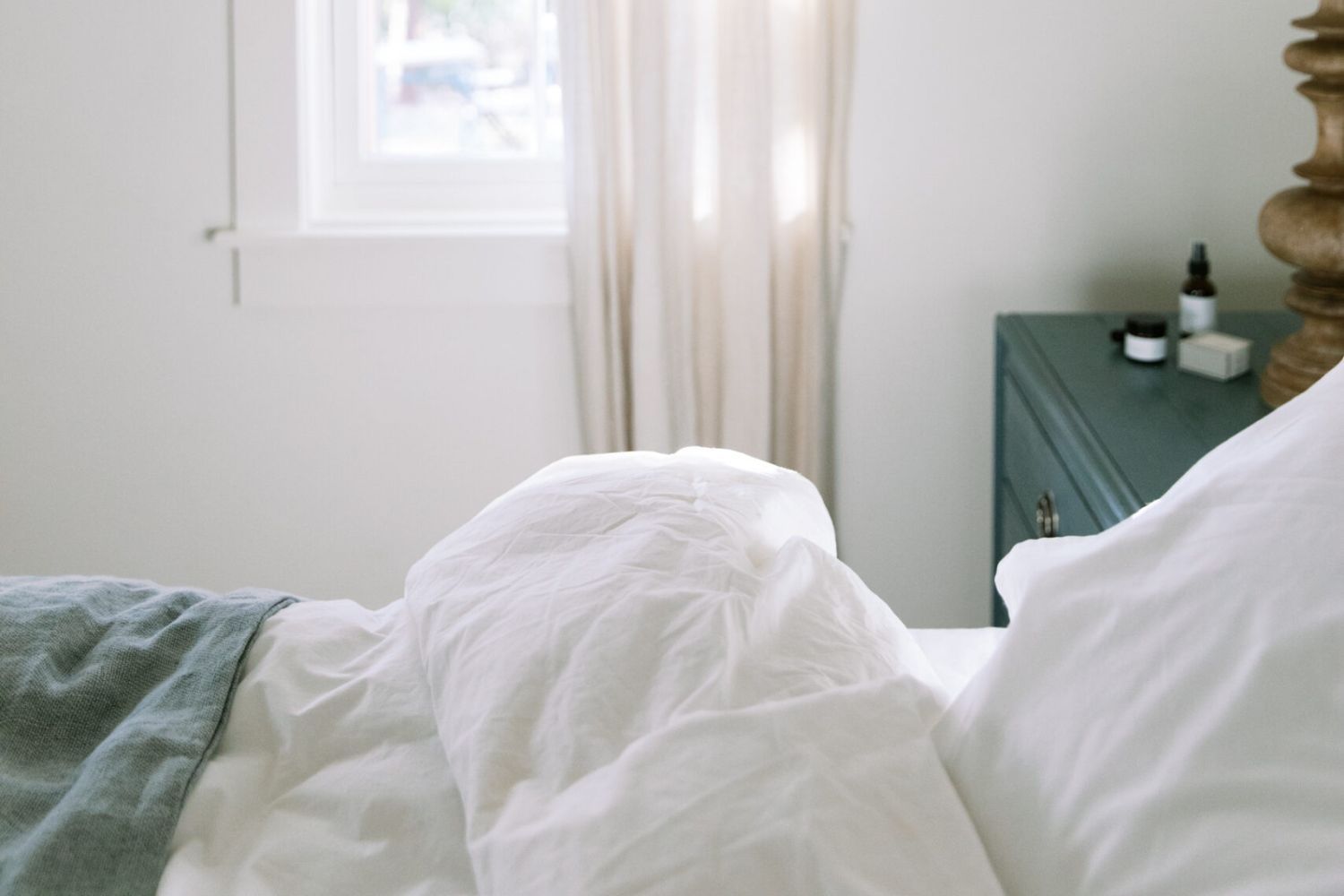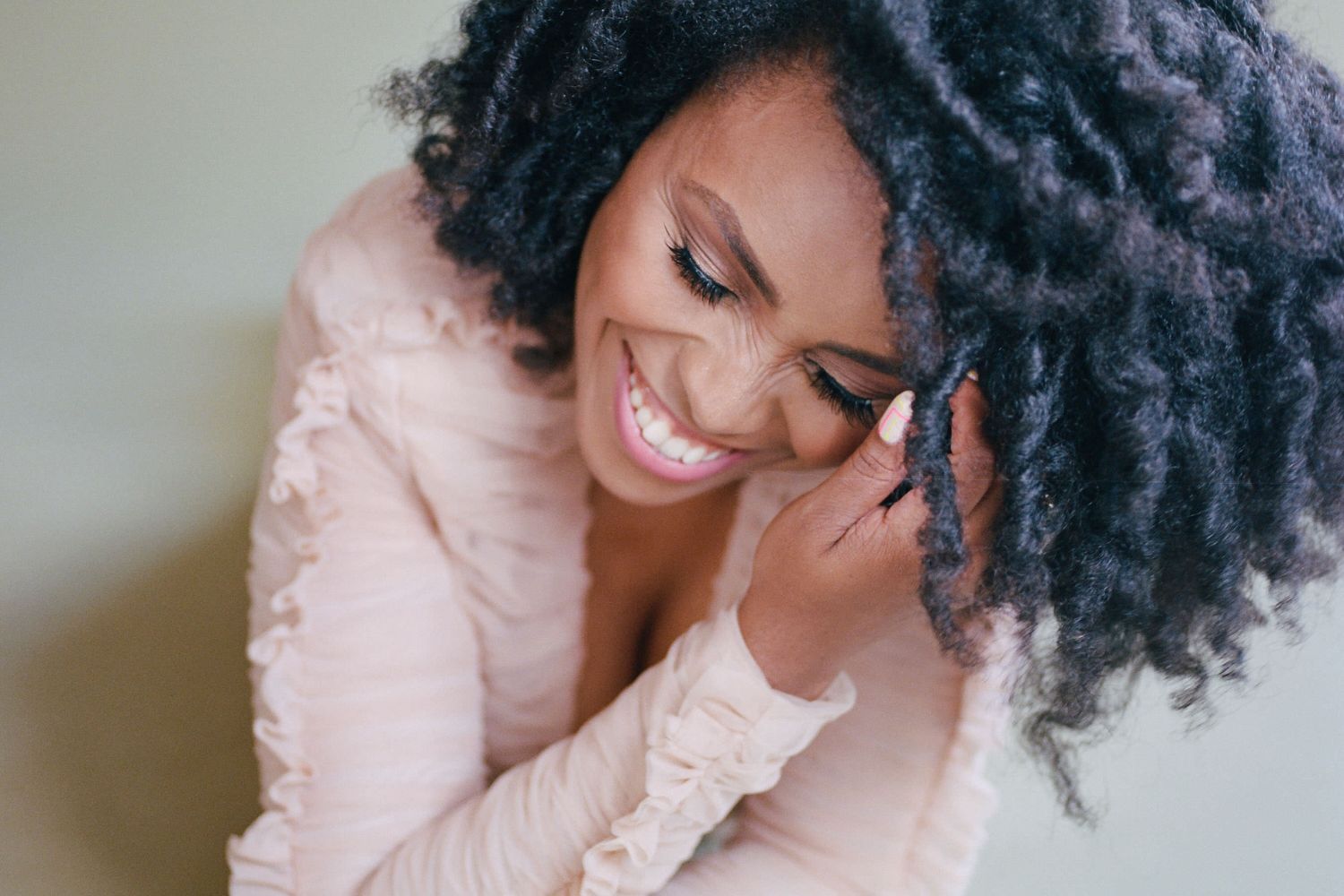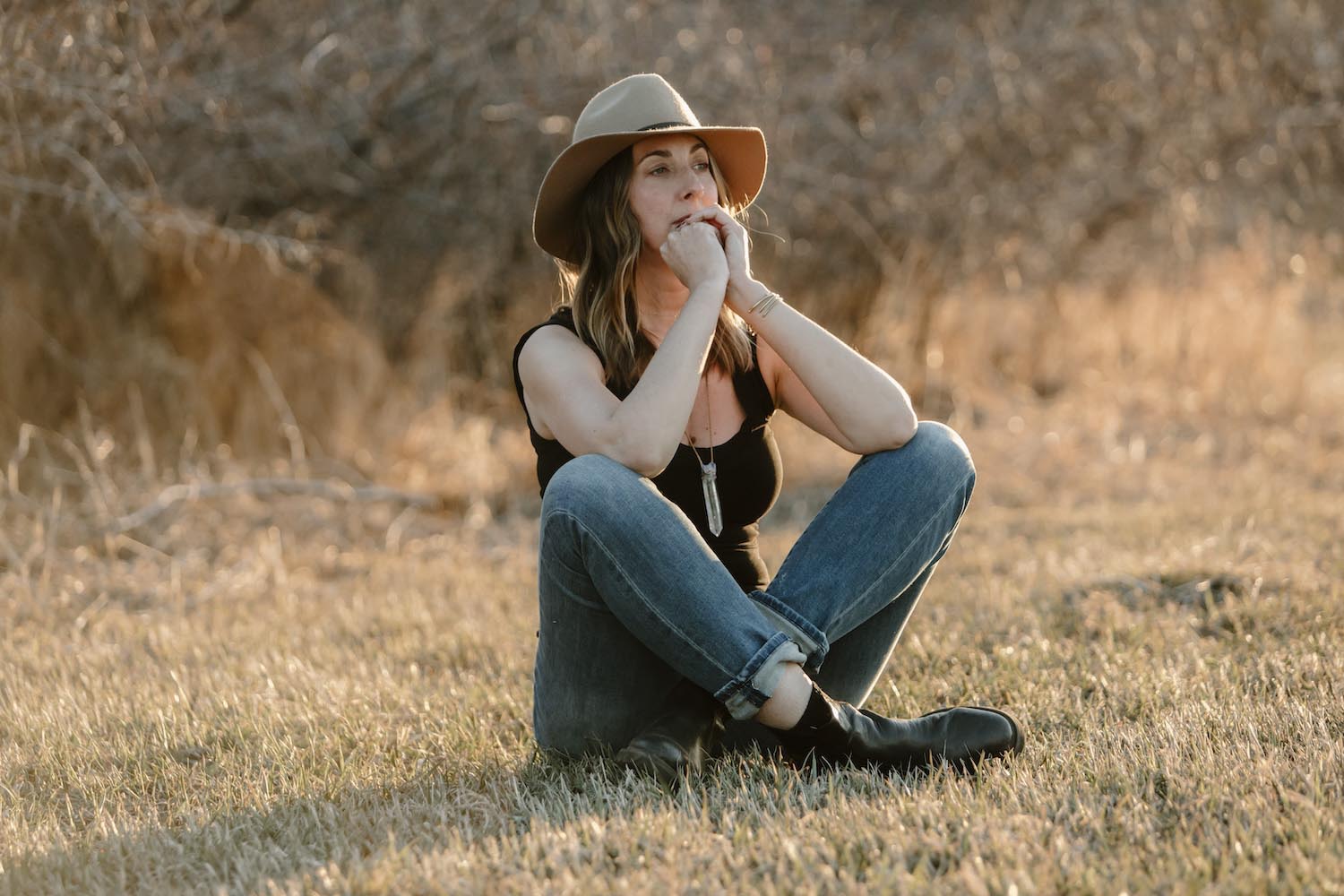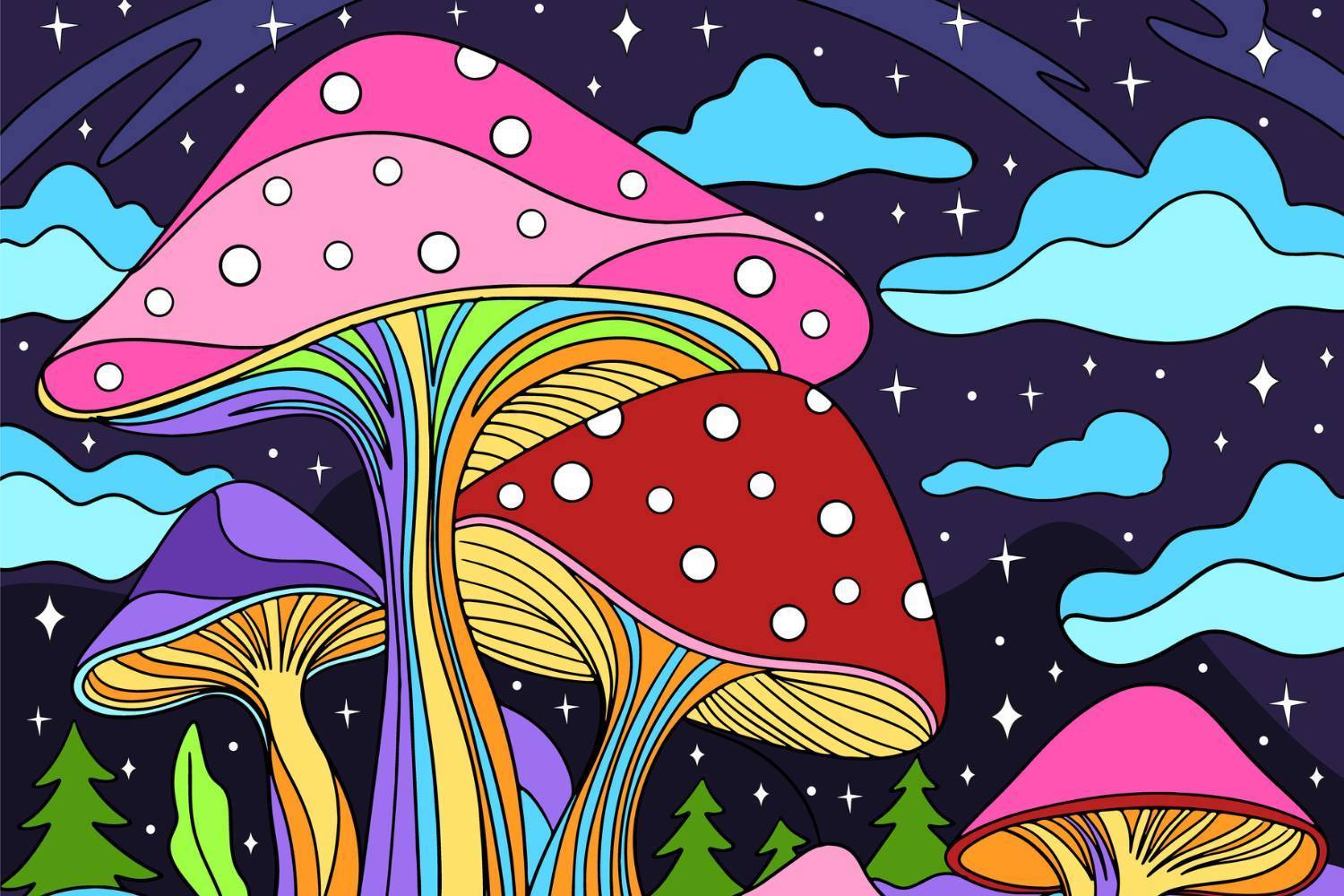
Microdosing the magic mushroom
A couple’s journey through love, loss, and the language of connection
*Disclaimers: Names have been changed to protect privacy. Quotes have been edited for clarity.
The first time I tripped on magic mushrooms, I saw the Mothership land. I mean that quite literally since the activity of the day was seeing George Clinton and the P-Funk All Stars perform live, complete with their iconic “vehicle of funk deliverance.” It was 1996, I was in college, and looking back, I can scrape together hazy memories of skipping arm-in-arm with my girlies through a cartoonish land on a beautiful spring day. Despite the awe of witnessing the P-Funk through my dilated pupils, the memory that sticks with me most is what happened on the comedown.
After the show, I floated home; the landscape, once dripping with vivid colors and softened edges, had returned to its usual shapes. I stopped to pick up cigarettes (it was the ’90s!) at the campus Kum & Go, where I ran into my frenemy. (We despised each other but remained civil because — much to my resentment and annoyance — we shared a best friend.) He was sitting on the curb smoking an Old Gold. The final traces of psilocybin dancing through my bloodstream had me feeling uncharacteristically charitable, so I plopped down beside him.
“You seem different,” he said, cocking his head and squinting at me.
“Oh yeah? Like how?” I said, not wanting to reveal my secret.
He gestured with his hands as if to draw an aura outlining my body. “You have a glow about you. And you seem … nicer?”
Something between us shifted. A barrier that, just yesterday, had seemed insurmountable miraculously dissipated. From that day forward, we were not only for-real friends, but we became pretty much inseparable for the rest of our college experience.
Years later, I had another experience. Now a full-fledged adult, my partner and I brewed some magic mushroom tea and had a lovely time which we fondly recall as “The Day We Went to Peace Planet.” We sat on a rooftop and watched a sunset so stunning I declared I would have paid good money to see it. But again, it was the residual goodness of the post-trip experience that stuck. As I strolled through my neighborhood the following day, strangers were suddenly smiling at me, stopping me just to say hello, encouraging me to pet their dogs. What the fuck was going on? Had I shed my plastered-on city scowl that normally arms me with don’t-talk-to-me vibes? Did this always happen, and I just hadn’t noticed? Or did I just seem … nicer?
The Carrie Bradshaw in me couldn’t help but wonder: Is the true magic of the mushroom not in the hallucinogenic journey, but in the destination?
Part one: Love
In a bustling oyster bar, I meet up with chef-turned-mushroom-cultivator Terence* and his girlfriend Alice*, a creative director and foodie-at-heart who has been navigating a tragic loss with a little help from the psychedelic mushroom. “Mushrooms teach you about connection,” says Terence. “From spore to mycelium to mushroom fruiting body to spore again, they’re all the same form of life. They just continue in a circle, and you see it happen really rapidly.” We munch on sea creatures while he describes the fungi’s life cycle, and I derail us with questions about whether the cordyceps mushroom can really take over your brain like it does in the HBO series The Last of Us. (The answer is no.) The science of the mushroom life cycle feels both over my head and surprisingly simple, familiar even. But this duality, I learn, is inherent to the mushroom. It embodies the concept of “both/and.”
People often have a hard time describing their psilocybin experiences because they are complex and abstract, but the lessons learned from communing with the plant are often quite simple. “The experience is like downloading the language that the mushroom speaks,” says Terence. “You understand it on a deep level because, somewhere, you’ve always known that you’re part of this life cycle and nature. Just as cats see different wavelengths and dogs hear different frequencies — just because we don’t perceive it doesn’t mean it doesn’t exist. Nature exists on a whole different level — trees feel things, mushrooms perceive things. So, you experience a different language and way of being when you communicate with a plant.”
Terence got into cultivating a highly sought-after (non-psychedelic) cordyceps mushroom after feeling burnt out mentally, spiritually, and physically from working in a kitchen (think: The Bear). “I had always been interested in holistic health and had known about mushrooms in traditional Chinese medicine like Reishi, Turkey Tail, all these different mushrooms with health benefits.” At the time, mushroom cultivation was still a niche, punk rock scene, with most knowledge being shared in underground internet forums. “Learning about mushrooms was exciting because it seemed like the final frontier in understanding our place in nature. The people who were doing it really cared about it,” he says. “It was before Target was selling, like, mushroom T-shirts. It wasn’t trending.”
It’s no secret to my Instagram algorithm that when it comes to exploring consciousness, I’m a seeker. The robot shamelessly bombards me with ads for “consciousness-enhancing” tinctures, “mind-altering” meditation apps, CBD, THC, ketamine therapy, and most recently, microdosing magic mushrooms. This increasingly prevalent wellness trend reaches far and wide — from Silicon Valley execs wanting to tap into flow states at work to veterans seeking treatment for PTSD to the microdosing moms who are trading in their mommy juice for the less destructive, and arguably more constructive, ’shroom. Even Gwyneth Paltrow is doing it. I’m determined to find out if microdosing really could heal us all.
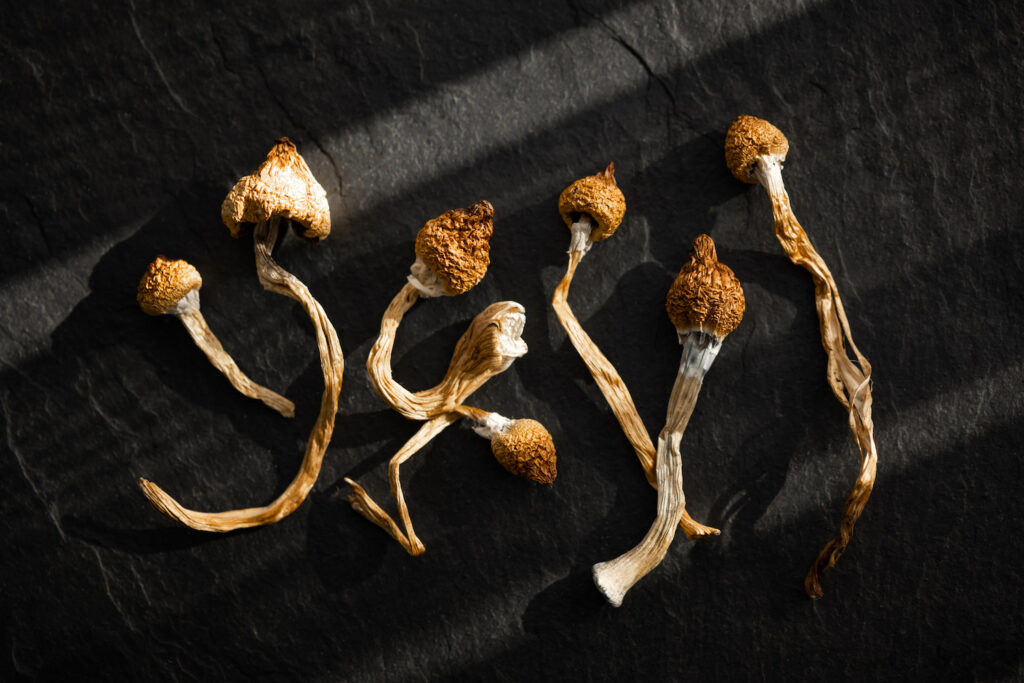
Part two: Loss
Kidney cancer begins in silence. In its early stages, there are often no signs or symptoms, making it difficult to detect. In fact, most kidney tumors are discovered accidentally. By the time symptoms appear, the cancer is usually at a more advanced stage, significantly reducing the chances of survival.
“From the moment he was diagnosed, we knew he was going to live with it for the rest of his life. We learned that there wasn’t much more we could do for him, and that was really hard.” Alice’s father was dying, and there was nothing she could do to save him.
The inevitable death of a parent is a rite of passage many of us will come face to face with sooner or later, if we haven’t already. And while we know, in our logical minds, that this will happen someday, it’s easier to cast off the thought as a problem for a future date. We tuck the idea away in a drawer, sweep it under the bed, hoping that when the time comes, we’ll be older, wiser, better prepared, and maybe, just maybe, we’ll be a little less scared.
“There’s no way you can prepare yourself for it, even when you see it coming from a mile away like we did,” Alice says. “My therapist recommended a book called Being Mortal. It was a great book to read, and it offered such a rational perspective. But when you’re facing the mortality of a parent, it’s hard to connect that to your rational brain. There’s something not even human about that — it’s unrealistic to think you can just explain it to yourself.”
To take on life’s biggest question, Alice sought refuge in microdosing the magic mushroom. “I was confronting something that was more difficult than I knew how to make sense of with my normal abilities,” she says. “Microdosing was something that I wanted to try and see if I could get anything out of it, and I found that I really did.”
With a regimen of capsules containing .28 grams of dried mushrooms, Alice braved the uncomfortable inevitable, head-on and little by little. Like many others, she finds it challenging to articulate her microdosing experiences. “It’s hard to describe in words because you’re being given a different language, but it makes more sense to you than, you know, books that your therapist provides, or even support from friends and family. When I was microdosing with the intention to sit with all that was going on with my dad, I understood on a deep level that it was all part of a cycle,” she explains. “A lot of what I was dealing with was this sense that it’s scary and unfair. Microdosing simplified things for me, [making death feel like] a natural part of life rather than a scary and bad thing. I’ve felt really comforted and held by it, instead of fighting against it.”
Death, dying, loss, grief. These are all words that we, as a collective society, tend to avoid and resist. We often feel unequipped to talk about death, especially with the dying. While Alice’s dad preferred not to discuss the elephant in the room, microdosing helped her feel connected to his experience. “It made me feel more like a part of it than shut out from it,” she says. “Watching someone battle cancer is difficult because you feel so helpless. But [microdosing] helped me understand that I wasn’t falling short. It was more about being part of the experience and knowing that’s just how it is … it’s just the next thing.”
Only three years after his diagnosis, Alice’s dad passed away. Ultimately, dipping a toe down the mushroom rabbit hole helped her find the one thing that is so elusive in our most challenging moments: acceptance.
“It was really hard, but I felt more ready to accept it because of my experience with the mushrooms,” she says. “It was comforting to realize that I didn’t have to assign positive or negative to it; it just was the natural [course of life.]”
Terence shares the sentiment. “There is something very spiritual about mushrooms,” he says. “They offer the language of connection that is like, ‘you are part of everything that is.’ You suddenly feel way less disconnected from literally everything. You accept suffering, you accept darkness, and your own shadow.”
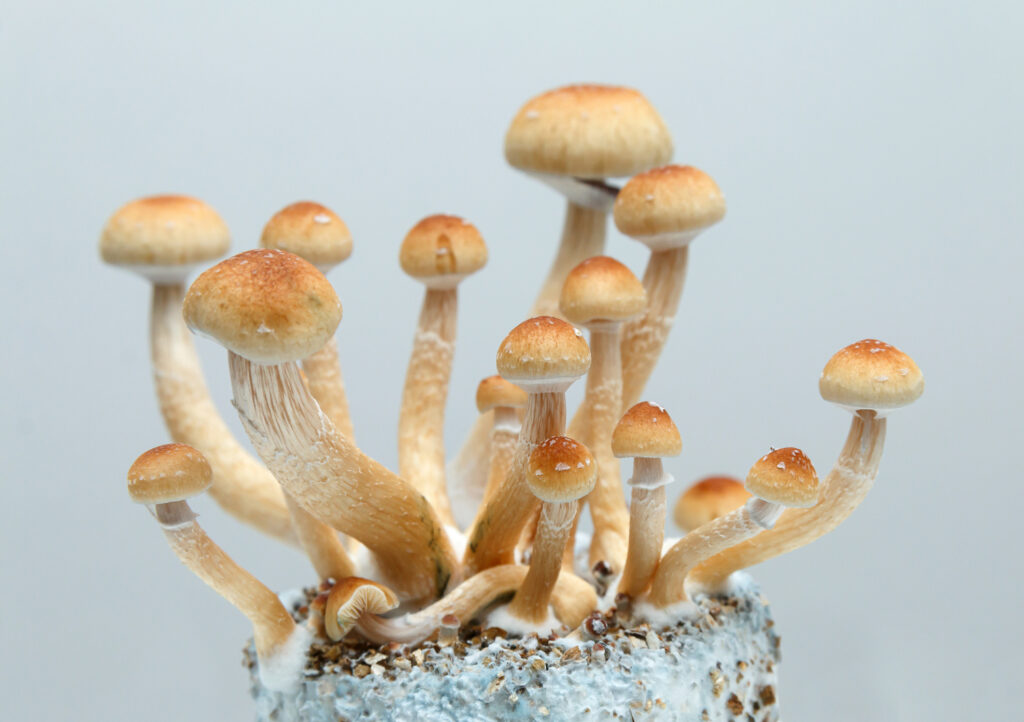
Part three: Microdosing 101
This is your brain on drugs: How psilocybin works
Psilocybin, the active compound in psychedelic mushrooms, has a similar structure to serotonin, the body’s “feel good” hormone. It enters the brain via those same serotonin receptors, which can lead to changes in mood, perception, and thought processes.
Research suggests that psilocybin can also enhance neuroplasticity and increase communication between different parts of the brain, helping the brain break free from rigid thought patterns and improving mental flexibility. This could be beneficial for treating depression, anxiety, post-traumatic stress disorder, addiction, seasonal depression, and other mental health conditions.
What is microdosing?
Microdosing is typically defined as taking approximately 1/10th or less of a full recreational dose of a psychedelic, usually LSD or psilocybin, to get the health benefits of the drug without experiencing the hallucinogenic effects. The idea is that it’s sub-perceptual — an amount so small you may not even notice it as you go about a normal day.
There are levels of dosing psychedelics. The breakdown typically goes like this: a microdose, a gentle dose, a museum dose (as in, you might like to spend time just walking around a museum and looking at things), a strong dose (typically the amount used in psychedelic healing, and should only be done with a trip-sitter, guide, or therapist) and a heroic dose (full-on tripping at a level where people often have spiritual or life-changing breakthroughs. Like a strong dose, a heroic dose should never be done alone.)
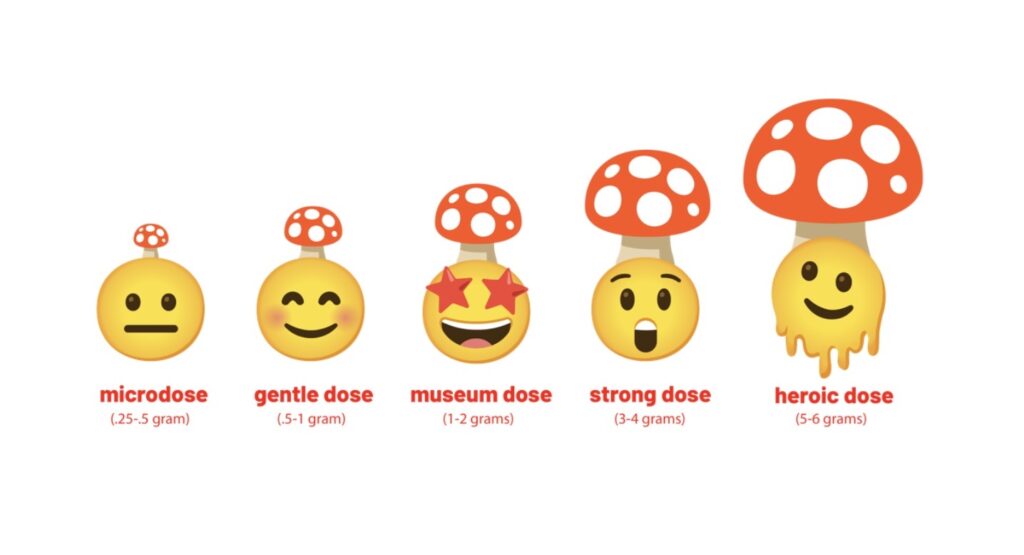
It may take some trial and error to find your ideal microdose. “Some people are just naturally very sensitive, and some people naturally have a very high tolerance,” says Terence. What might feel like a museum dose to some can feel like a heroic dose to others, so it’s important to start small and see how it affects you.
“With a true microdose, you’re definitely not gonna trip. You might not even notice anything,” Terence says. “You might get a little excitement in your chest and colors might become a little sharper. What it does is it subtly dampens your ego, so you become a little bit more open. Your brain becomes a little bit more flexible to knocking out bad stuff and old thought patterns.”
Some people say a microdose just adds a little sparkle; others can feel more motivated or more relaxed. “Physically for me, I feel a little bit weighted,” says Alice. “I feel grounded and sort of like sinking into my surroundings, not in a bad way but in a juicy, relaxing way. I could take in the most mundane surroundings for a very long time and be completely content and engaged with them.”
Wait. Are psilocybin mushrooms even legal?
The short answer is no. Psychedelics have a long and complicated history of being demonized and criminalized in the US. (Spoiler alert: The federal government not only wants to regulate your uterus, but your consciousness, too!) While clinical studies show a myriad of mental health benefits, psilocybin is still classified as a Schedule I drug in many states. There is a growing list of states where psilocybin is decriminalized, but not legalized. And according to Terence, not legalizing it may not be a bad thing.
“There’s a big difference between the legalization effort and the decriminalization effort. The model of decriminalization is grow-gather-gift, meaning you grow for yourself or find it in nature, and you give to your friends,” he says. “I prefer the decriminalization effort because it focuses on tight-knit communities and building the network, as opposed to state-sponsored stores selling you a product because they want the tax money, not to pay for schools or broken roads, but to enrich their crony buddies.”
“The underground community seems more connected with the people they’re helping,” Alice adds. “They have more personal experience with the people consuming their products, so they care that they have a good experience.”
Terence agrees, “The black and gray markets that exist care way more about the user experience than the state will. The underground movement has the knowledge and the experience behind it to educate. There’s never going to be any education coming from the product pushers, as opposed to the closer you get to the cultivator.”
How do I get psilocybin mushrooms? Asking for a friend.
When seeking magic mushrooms, the rules of our pre-legal weed days still apply: Always know your dealer. “Most people nowadays know someone who knows someone. The closer you can get to the source is always going to be your best bet,” Terence advises.
And if you, like me, are being targeted by social media ads, it’s critical to be discerning. “For women on Instagram, I feel like we’re served a lot of ads that are very wellness-coded, with branding that is really well done and looks very pretty, and they’re presented as supplements,” Alice says. But with psychedelic therapy becoming mainstream and more accessible, there is a very real danger of getting a tainted product, especially when it’s easier than ever for scam artists to recreate the packaging of legit brands.
“There are a lot of products going around that are sold as one thing but have research chemicals in them and are putting people in the hospital,” Terence warns. Another red flag to look out for: “On Instagram specifically, any profile that has a telegram number, signal number, or a WhatsApp link in the bio. Or low-quality pictures of not just mushrooms, but pictures of Xanax and a bunch of different pharmaceuticals — stay far away from that.”
The takeaway: For now, it’s the wild west in shroom town. The best way to stay safe is to do your research and know your source.
What are the risks of taking psilocybin mushrooms?
Overall, psilocybin mushrooms are considered relatively safe. While death from an overdose is incredibly rare, it is possible to have a bad trip if you consume too much. Some experts also warn that people with a personal or family history of schizophrenia or bipolar disorder may have an increased risk of psychedelics triggering a psychotic or manic episode.
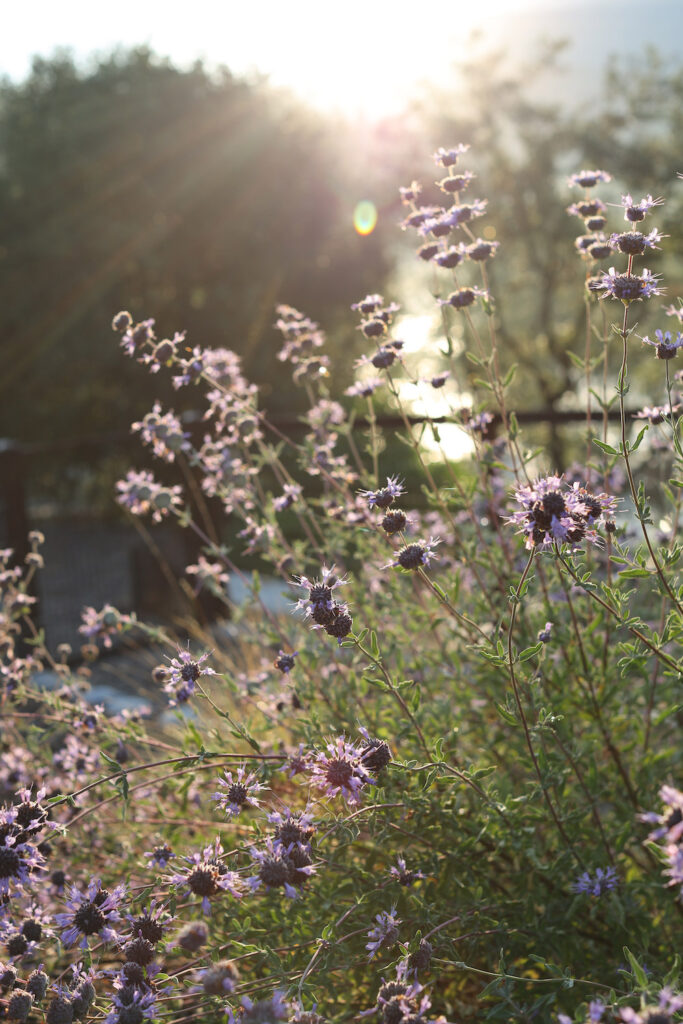
How to get the most out of microdosing
Consider your set and setting
Set and setting are terms often used in reference to psychedelic drugs. Set means one’s mental state and mindset; setting is the physical and social environment. Before taking any amount of psilocybin, consider how you’re feeling and where you will be. What is your mood? What have you been thinking about, reading, listening to? Are you in a safe environment? Are you with people you trust? These factors can all come into play and influence your experience.
Alice preferred microdosing in her garden, close enough to her home to feel safe, but not inside where she felt the pressure to complete tasks, like working or doing the dishes. “My [garden space] is a little bit removed from tasks that might make my brain churn,” she says. “I have lots of plants like herbs, tomatoes, cucumbers, mostly things you can eat. I’ve always found a lot of comfort in giving my time to that garden. It feels nice to be in a space with things that you’re giving your energy to, and they’re sort of giving it back to you. I have a favorite place to sit out there where I would just watch the clouds like they were television.”
Set an intention
While the wellness community is hyping microdosing, it’s not a magic bullet that solves all your problems. To truly reap the benefits, it takes some personal effort. “Intention and integration are on either side of the experience,” Terence says. “It does take work to recognize 1) what you want to change in your life in the first place, and 2) how to bring that into your life after you’ve ‘answered the phone.’”
The goal of microdosing, he says, is to spend some time with an intention in a slightly different mindset. “The point is to create a new practice where you slightly shift yourself out of patterns that might be holding you back or have you feeling stuck. It allows you to step out of your everyday boring, mundane, repeatable routine and see a slightly different perspective, just enough to go ‘Oh, I have the power to change that. Alright, I can do this.’ It’s very liberating.”
Create space to integrate the experience
For many microdosers, it’s not something that’s done on the daily. A popular protocol is to microdose one day, and then take two days off. Some people do it every other day, and others, just a few times a year. The key is to give yourself a break to reset. “No matter what you do, always take some time off — at least one day a week — because you can build a tolerance,” Terence explains. “You want to give your brain time to marinate in it. You bring an intention to the experience, and then you come back from it and integrate it into your life.”
I’m micro-curious. Any advice for first timers?
Trying a psychedelic for the first time can be intimidating. But starting out with a low dose and an intention allows you to have a more controlled experience.
“If you’re curious but feeling apprehensive, that’s warranted. But a challenge isn’t always something to avoid,” Terence says. “[Microdosing] is not such a challenge that you need to be scared by it. If you know your source, there’s not much to fear.” For Alice, it was well worth giving it a try. “It’s an amazing gift you can give yourself, especially if you’re committed to digging deeper on lots of different fronts but you’re still hitting a wall,” she says. “It’s an amazing tool to use to get new momentum and create new perspectives if you’re feeling stuck.”
Amid our pile of empty oyster shells, Alice and Terence look to the future. Like the mushroom’s qualities, their plans are expansive. Alice’s garden is set for an upgrade — soon they’ll have a farm. “We’re moving soon and hoping to expand the mushroom lab to add some culinary varieties into the mix,” Alice says.
“We’ll grow more culinary mushrooms to feed a food operation in a smaller, less hectic town, to serve a community we can get more integrated into,” Terence adds. “We want to connect to nature and production more. We’re gonna be working with our hands, getting a little dirtier. The quails will eat mushroom scraps … From all the spent grain from the mushrooms, the chickens and quails will be fed. Thus, the life cycle.”
And so, we’ve come full circle. Before we say goodbye, I can’t help but ask one final question: Is it possible that the magic mushroom made me … nicer? According to Terence, it checks out. “In an experience, you reach out, much like mycelium does,” he says. “Mushrooms are all about connection. You become way more open and receptive to the world around you.”

